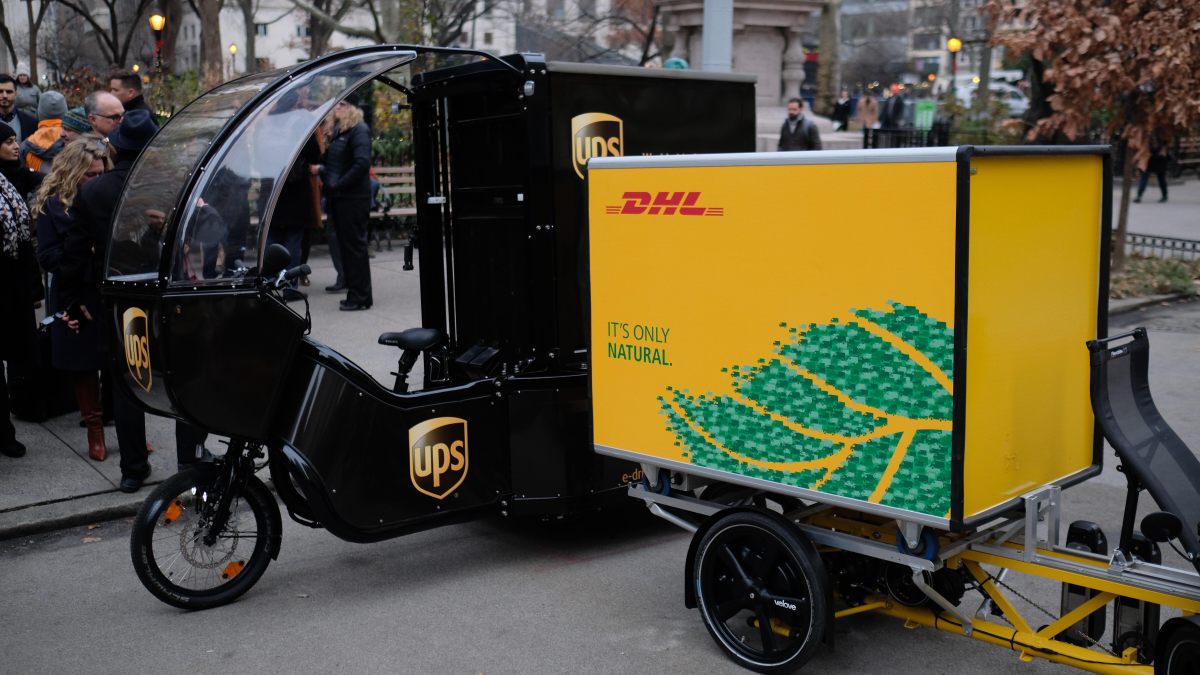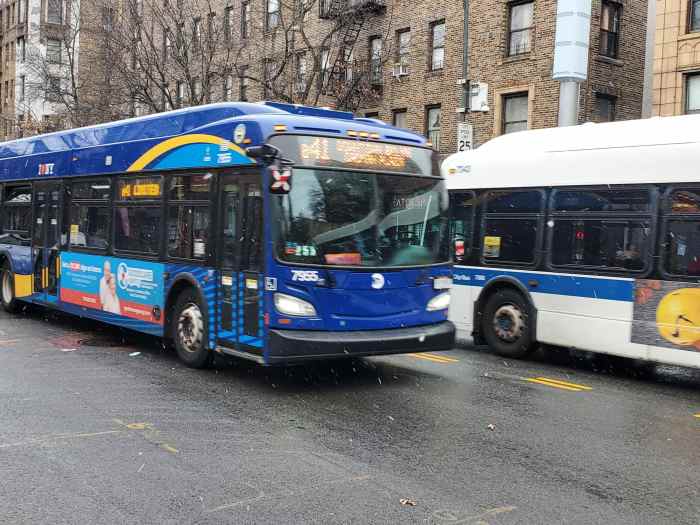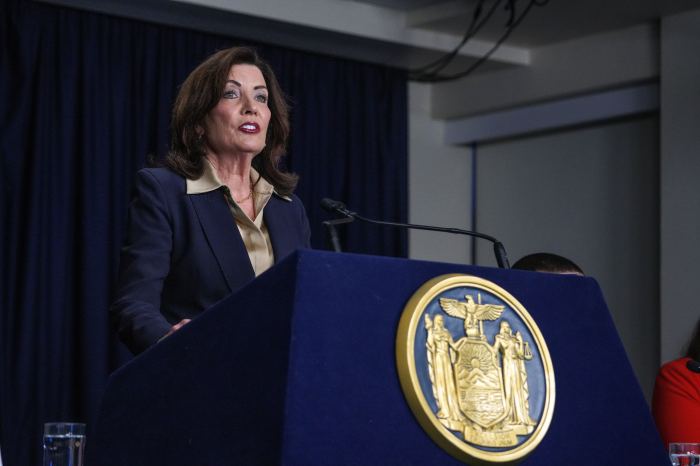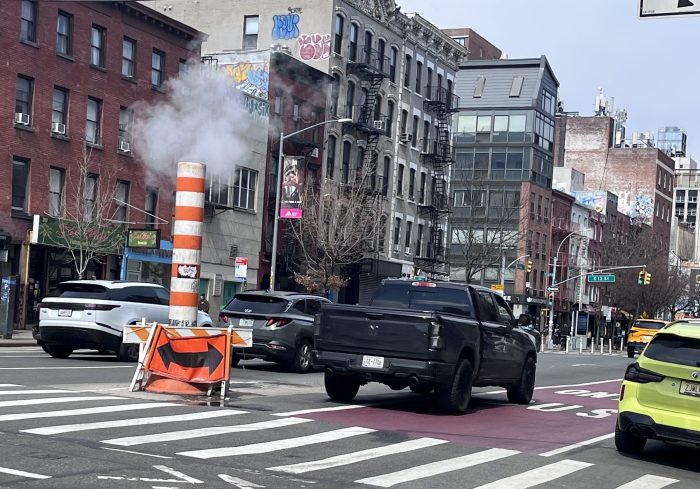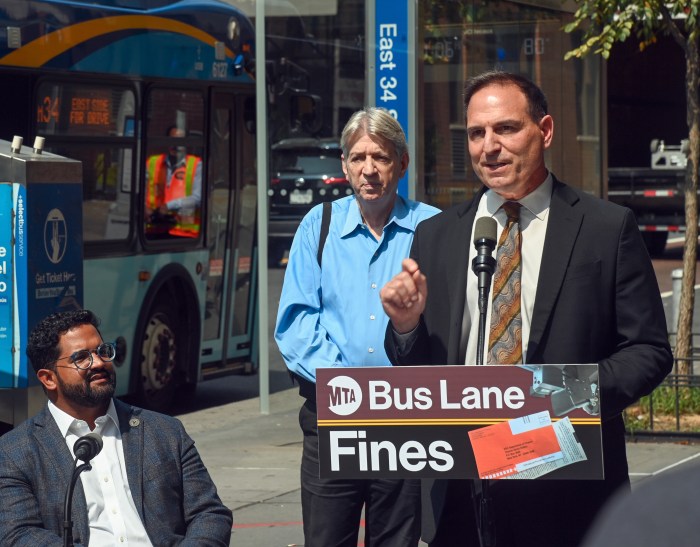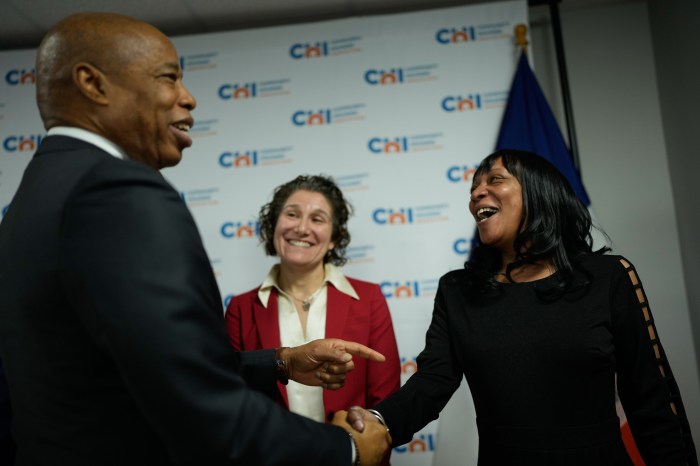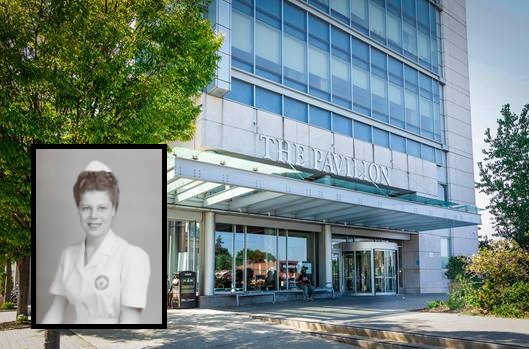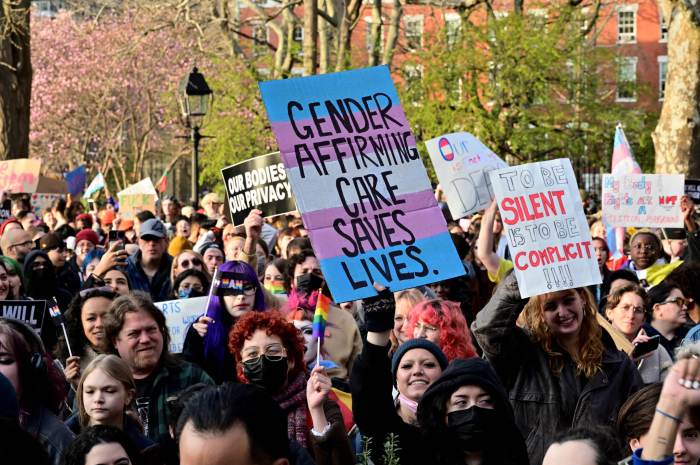Online holiday shopping is making New York streets less safe, city officials believe.
The Police Department announced Monday it would be targeting traffic enforcement against reckless truck drivers after seven pedestrians were killed in the last week — including three who were struck and killed by box trucks.
But Polly Trottenberg, the city’s Department of Transportation commissioner, said the deaths are likely tied to the rise in holiday shopping — both online (with more delivery trucks on the streets) and at brick-and-mortars (with more shoppers traveling to them).
“Tragically, we’ve had a spate of fatalities, and we were looking at our data from last year — and we saw the same thing last year in late December,” Trottenberg said during a news conference in Long Island City.
“Just trying to think about some of the factors — obviously a lot of people [are] out for Hanukkah and Christmas shopping and unfortunately a lot of trucks [are] out on the street,” she continued. “A lot of the recent fatalities have involved box trucks—probably many of them delivering packages and other things.”
For the first time in six years, New York City saw an increase in traffic deaths in 2019. The de Blasio administration has promised more enforcement and new bike lanes in hopes to renew the downward trend under the mayor’s Vision Zero initiative to eliminate traffic deaths by 2024.
Newly-minted NYPD Transportation Chief William Morris said highway police are specifically focusing on truck drivers. Over the weekend, in response to the recent deaths, the Police Department issued 1,000 criminal summonses and 385 moving violations to truck drivers.
Another 213 trucks were inspected, with police taking eight vehicles out of service, Morris said.
“This is very much what [Police] Commissioner [Dermot] Shea speaks about with precision policing,” Morris said. “We take a look at that data; we see what does that data mean; and then we design a strategy.”
Morris pledged to continue targeting enforcement going into the new year, but couldn’t speak to whether that would be enough to curb reckless truckers.
“What enforcement is designed to do is to change behavior,” he continued. “We do this enforcement—it’s done publicly — folks see it happening and we hope it affects the larger group of people who might engage in that,” Morris said.
“Can we be every place all the time? No, but we can be where we see these collisions occur,” he continued.
Manhattan Councilman Ydanis Rodriguez, chair of the Council’s Transportation Committee, said he would push his colleagues to pass legislation to require truck side guards on all private trucks doing business in the city. The guards are installed to block the spaces between high truck tires to prevent pedestrians, cyclists or small cars from getting pinned underneath.
Side guards are a standard truck safety feature in countries like London and Brazil, but in New York City only its municipal fleet and private carting companies are required to have them installed—and not until 20204.
“We also want to see anyone that does business with the city … to install side guards,” Rodriguez said.
Trottenberg said the city was looking for ways to reduce truck delivery miles and push to make SUVs safer by design as they become more popular across the country.
The commissioner added that she and others would be discussing the latter point with the federal government as the National Highway Traffic Safety Administration reviews its vehicle design standards. She said those standards should include pedestrian and cyclist safety.
“[NHTSA] have traditionally very much focused on the safety of the occupants of the vehicle,” Trottenberg said. “I think a bunch of us want to be part of the movement to say, ‘What’s the safety of how they interact with pedestrians and cyclists on the street?’ That should also be, as it is in Europe, part of how you get your crash rating.”
As for reducing truck miles, Trottenberg pointed to the city’s cargo bicycle pilot, which is still a very modest test run involving a handful of bike delivery vehicles.
“I have people complaining to me about the trucks on the street and I’ll say, ‘Well how many packages did you order from Amazon this week?’ Usually, they’ll knowledge they got a couple.” Trottenberg said. “So that is certainly the rising trend. We are spending a lot of time with the freight industry, cargo bikes, and looking for other ways that they can eventually consolidate their packages and do more hand-trucking and reduce those vehicle miles traveled on the roadway.



